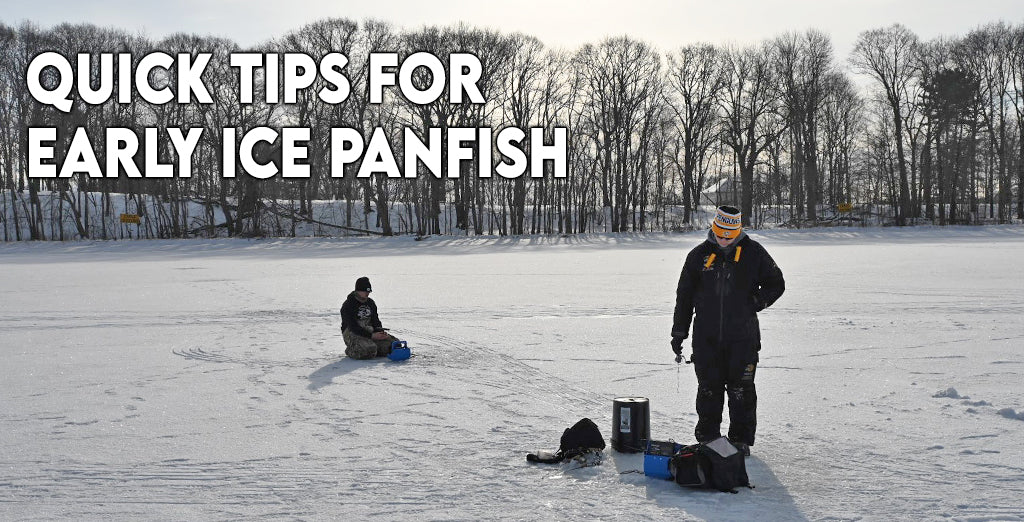Quick Tips for Early Ice Panfish

Early ice is often the best time of the ice fishing season, capitalizing on the remaining healthy vegetation that still provides oxygen, nutrients, and forage. We will take a look at some of the basics when it comes to safety, location, and equipment to get you started.
Safety
Some of the first ice of the season can often result in success but also many challenges. Safety must be the biggest priority on the ice, especially with new ice. Always approach the ice with caution; no ice is completely safe, and always try to fish with a partner this time of year. A general rule is to never venture out on anything less than 4 inches of hard clear ice. Travel light to reduce weight and always use a spud bar when venturing out to check the ice. Have your ice picks with you, and having a personal floatation device or a float suit is encouraged. Recognize factors that can cause ice issues, such as snow insulating the ice, which doesn't allow it to form as quickly. Be sure to monitor the prior and extended weather forecast. Staying on top of the weather trends is paramount to the ice conditions and your safety.
Location
Whether you’re trying to acquire some fillets for fish tacos or just out to catch some fish, targeting panfish such as bluegill, crappie, and perch can be an action-packed, fun time out on the ice for everyone. Often if you have been targeting these fish with success in the fall, those same areas are an excellent place to start now on the ice. Congregating on shallow flats with healthy vegetation is where you should be searching for bluegill or perch. Crappies will tend to group up and suspend on the nearest weed line early on. Drilling multiple holes will help you move around from different depth ranges and help you locate the healthiest vegetation on the flat and where the edge of the grass starts and stops. These fish tend to group up in numbers, so the rest shouldn't be far off once you find a few. Moving around and continuing to move with a school of fish will bring consistent success. It is always best to start shallow and work your way out deeper as the ice season goes along and the shallow grass begins to die off.
Gear/Technique
Whether I pursue bluegills, crappies, or perch, my rod, reel, and line set up tend to stay the same. I want an ultra-light combo with a light 2-4lb test line. These stealthy combinations allow me to be around finicky fish and help me detect the faintest of bites. I’m able to fish a variety of lightweight, small baits effectively. A few baits to approach all species with are light 1/64 -1/32 oz tungsten jigs. I like to tip these jigs with a wax worm or a similar size soft plastic for bluegill and perch. I like to add a minnow head for crappie. You can fish these baits slowly with the right tools for the job. Generally, lifting and quivering the bait slowly above the fish is a subtle way of triggering bites. Often perch and crappie will fall victim to small 1/32 and 1/16 oz spoons and rattle baits. Using these baits allows you to fish more aggressively, providing more vibration in the water column and gaining fish's attention. Having a flasher or a graph on the ice will be crucial to targeting and catching fish. Your electronics whether a flasher or a graph helps you find the correct grass and depth you want to target and help you target fish with precision accuracy. Being able to work your bait in front of fish on your electronics is paramount to consistent success. This allows you the ultimate ability to trigger bites and continually see if you are around fish.
I hope some of these tips are a good starting point for you when you head out onto the ice this season. Remember always to practice safety no matter how seasoned of an angler you are. Ice fishing can be some of the most fun to be had especially panfish, I know I can't wait to get started!
- Stan Miketa